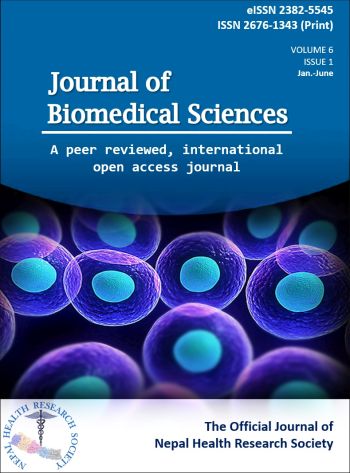CPEB2 激活的 VGLUT2 mRNA 轴突翻译可促进谷氨酸能传递和突触前可塑性
IF 9
2区 医学
Q1 CELL BIOLOGY
引用次数: 0
摘要
突触的局部翻译对于快速重塑突触蛋白质组以维持长期可塑性和记忆非常重要。虽然突触后/树突区与记忆相关的局部翻译的调控机制已被广泛阐明,但目前还没有直接证据表明轴突中的哪种 RNA 结合蛋白(RBP)能控制目标特异性 mRNA 翻译以促进长期电位(LTP)和记忆。我们以前曾报道,由细胞质多腺苷酸化酶结合蛋白 2(CPEB2)控制的翻译对突触后可塑性和记忆非常重要。在这里,我们研究了 CPEB2 是否调控轴突翻译以支持突触前可塑性。我们对敲除泛神经元/胶质细胞或谷氨酸能神经元特异性 CPEB2 的小鼠进行了行为和电生理评估。对海马沙弗副神经(SC)-CA1和颞神经(TA)-CA1通路进行了电记录,以监测突触传递和4列高频刺激诱发的LTP。通过RNA免疫沉淀和生物信息学分析,发现了与学习相关的CPEB2结合轴突RNA候选物,并通过Western印迹和荧光素酶报告实验进一步验证了这些候选物。表达Cre重组酶的腺相关病毒被立体投放到TA回路的突触前或突触后区域,以消减Cpeb2,从而进行进一步的电生理研究。生化分离的突触小体和在微流体平台上培养的轴突化神经元被用于测量轴突蛋白合成和FM4-64FX载荷的突触小泡。对海马CA1神经元的电生理分析发现,在CPEB2缺失的SC和TA传入中,兴奋性和囊泡释放概率异常,因此我们将CPEB2免疫沉淀转录组与成人皮层中学习诱导的轴突转录组进行了交叉比较,以确定可能受CPEB2调控的轴突靶标。我们验证了编码囊泡谷氨酸转运体2(VGLUT2)的Slc17a6受CPEB2的转译上调。在表达谷氨酸转运体2(VGLUT2)的谷氨酸能神经元中条件性敲除CPEB2,会损害小鼠海马依赖性记忆的巩固。在以VGLUT2为主的TA传入中,突触前特异性消减Cpeb2足以减弱蛋白质合成依赖的LTP。此外,通过 CPEB2 缺陷或环己亚胺阻断活动诱导的轴突 Slc17a6 翻译会减少含 VGLUT2 的突触小泡的可释放池。我们鉴定了 272 个与 CPEB2 结合的转录本,它们在学习后的轴突翻译发生了改变,并在 CPEB2 驱动的 VGLUT2 轴突合成与突触前翻译依赖性 LTP 之间建立了因果联系。这些发现扩展了我们对突触前区记忆相关翻译控制机制的理解。本文章由计算机程序翻译,如有差异,请以英文原文为准。
CPEB2-activated axonal translation of VGLUT2 mRNA promotes glutamatergic transmission and presynaptic plasticity
Local translation at synapses is important for rapidly remodeling the synaptic proteome to sustain long-term plasticity and memory. While the regulatory mechanisms underlying memory-associated local translation have been widely elucidated in the postsynaptic/dendritic region, there is no direct evidence for which RNA-binding protein (RBP) in axons controls target-specific mRNA translation to promote long-term potentiation (LTP) and memory. We previously reported that translation controlled by cytoplasmic polyadenylation element binding protein 2 (CPEB2) is important for postsynaptic plasticity and memory. Here, we investigated whether CPEB2 regulates axonal translation to support presynaptic plasticity. Behavioral and electrophysiological assessments were conducted in mice with pan neuron/glia- or glutamatergic neuron-specific knockout of CPEB2. Hippocampal Schaffer collateral (SC)-CA1 and temporoammonic (TA)-CA1 pathways were electro-recorded to monitor synaptic transmission and LTP evoked by 4 trains of high-frequency stimulation. RNA immunoprecipitation, coupled with bioinformatics analysis, were used to unveil CPEB2-binding axonal RNA candidates associated with learning, which were further validated by Western blotting and luciferase reporter assays. Adeno-associated viruses expressing Cre recombinase were stereotaxically delivered to the pre- or post-synaptic region of the TA circuit to ablate Cpeb2 for further electrophysiological investigation. Biochemically isolated synaptosomes and axotomized neurons cultured on a microfluidic platform were applied to measure axonal protein synthesis and FM4-64FX-loaded synaptic vesicles. Electrophysiological analysis of hippocampal CA1 neurons detected abnormal excitability and vesicle release probability in CPEB2-depleted SC and TA afferents, so we cross-compared the CPEB2-immunoprecipitated transcriptome with a learning-induced axonal translatome in the adult cortex to identify axonal targets possibly regulated by CPEB2. We validated that Slc17a6, encoding vesicular glutamate transporter 2 (VGLUT2), is translationally upregulated by CPEB2. Conditional knockout of CPEB2 in VGLUT2-expressing glutamatergic neurons impaired consolidation of hippocampus-dependent memory in mice. Presynaptic-specific ablation of Cpeb2 in VGLUT2-dominated TA afferents was sufficient to attenuate protein synthesis-dependent LTP. Moreover, blocking activity-induced axonal Slc17a6 translation by CPEB2 deficiency or cycloheximide diminished the releasable pool of VGLUT2-containing synaptic vesicles. We identified 272 CPEB2-binding transcripts with altered axonal translation post-learning and established a causal link between CPEB2-driven axonal synthesis of VGLUT2 and presynaptic translation-dependent LTP. These findings extend our understanding of memory-related translational control mechanisms in the presynaptic compartment.
求助全文
通过发布文献求助,成功后即可免费获取论文全文。
去求助
来源期刊

Journal of Biomedical Science
医学-医学:研究与实验
CiteScore
18.50
自引率
0.90%
发文量
95
审稿时长
1 months
期刊介绍:
The Journal of Biomedical Science is an open access, peer-reviewed journal that focuses on fundamental and molecular aspects of basic medical sciences. It emphasizes molecular studies of biomedical problems and mechanisms. The National Science and Technology Council (NSTC), Taiwan supports the journal and covers the publication costs for accepted articles. The journal aims to provide an international platform for interdisciplinary discussions and contribute to the advancement of medicine. It benefits both readers and authors by accelerating the dissemination of research information and providing maximum access to scholarly communication. All articles published in the Journal of Biomedical Science are included in various databases such as Biological Abstracts, BIOSIS, CABI, CAS, Citebase, Current contents, DOAJ, Embase, EmBiology, and Global Health, among others.
 求助内容:
求助内容: 应助结果提醒方式:
应助结果提醒方式:


